110+ Sample Meeting Agenda
-

Corporate Meeting Agenda Template
download now -

Education Meeting Agenda Template
download now -

Customer Meeting Agenda Template
download now -

IT Meeting Agenda Template
download now -

Family Meeting Agenda Template
download now -

Data Lunch Meeting Agenda
download now -

Club Meeting Agenda
download now -

Transition Meeting Agenda
download now -

Follow-up Meeting Agenda
download now -

Planning the Meeting Agenda
download now -

Procurement Quarterly Meeting Agenda
download now -

Annual Ordinary General Assembly Meeting Agenda
download now -

Stakeholder Meeting Agenda
download now -

Executive Board of Director Meeting Agenda
download now -

Special Meeting Agenda
download now -

Data Review Meeting Agenda
download now -

The Meeting Agenda
download now -

State Board for Social Work Meeting Agenda
download now -

Basic Meeting Agenda
download now -
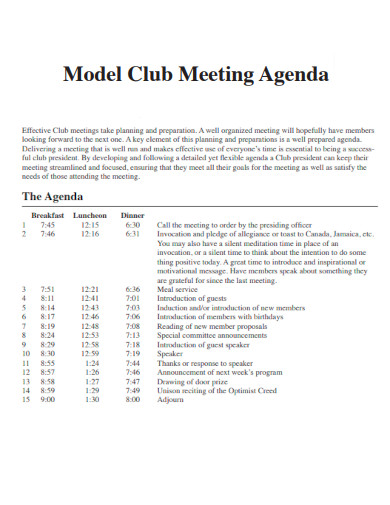
Model Club Meeting Agenda
download now -
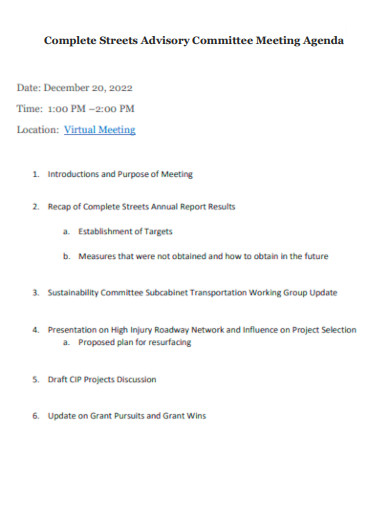
Complete Streets Advisory Committee Meeting Agenda
download now -

Administrative Committee Meeting Agenda
download now -

Sample Meeting Agenda
download now -

Child Death Review Team Meeting Agenda
download now -

Monthly Progress Meeting Agenda
download now -

Entry Meeting Agenda and Minutes
download now -

Formal Meeting Agenda
download now -

Mobility Meeting Agenda Request Form
download now -

Agenda for Department Meeting
download now -

Definition Agenda of Meeting
download now -

Project Postmortem Meeting Agenda
download now -

Agenda for First Change Team Meeting
download now -

Regular Meeting Agenda Template
download now -

Detailed Agenda Meeting
download now -

Example Review Meeting Agenda
download now -

Executive Team Meeting Agenda
download now -

General Meeting Agenda
download now -
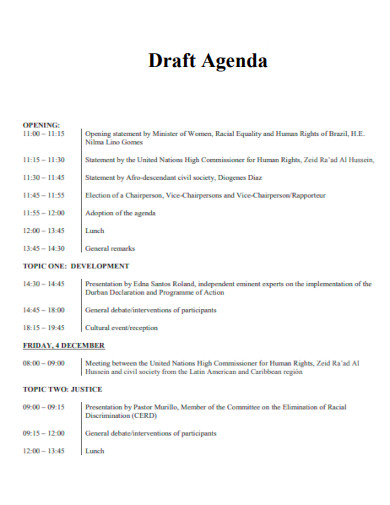
Draft Agenda
download now -
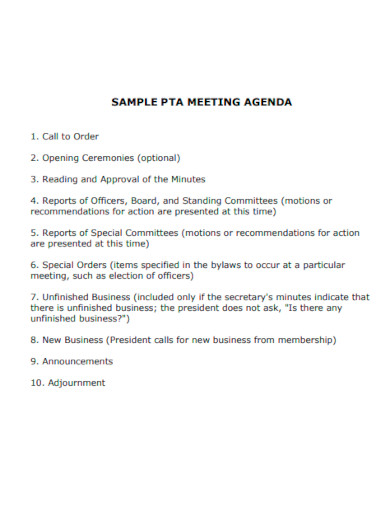
PTA Meeting Agenda
download now -

Agenda Preparation and Meeting Procedure
download now -

Meeting Wise Agenda Template
download now -

Meeting Agenda in PDF
download now -

Kickoff Meeting Agenda
download now -
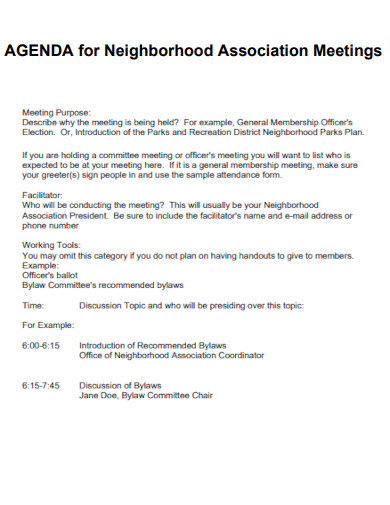
Agenda for Neighborhood Association Meeting
download now -

Board Meeting Agenda Template
download now -

NAC Meeting Agenda
download now -

Lesson Plan Agendas and Meeting Minutes
download now -

What is Meeting Agenda
download now -

Quarterly Management Meeting Agenda
download now -

Sports Meeting Agenda
download now -

Construction Progress Meeting Agenda
download now -

Agenda on Site Pre Application Meeting
download now -

Today’s Meeting Agenda
download now -

Simple Meeting Agenda
download now -

May Meeting Agenda
download now -

Meeting Agenda Handout
download now -

Agenda for Initial Design Team Meeting
download now -
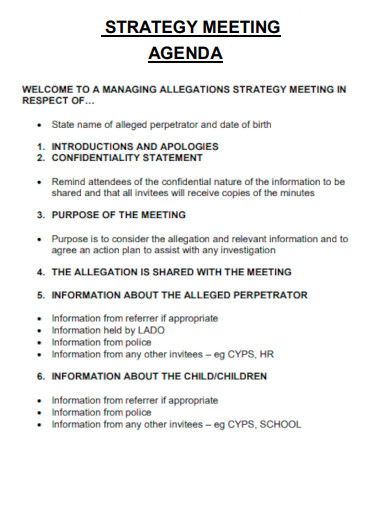
Strategy Meeting Agenda
download now -

Your First Meeting Agenda Template
download now -

Data Meeting Agenda
download now -

Printable Meeting Agenda
download now -

Committee Meeting Agenda Template
download now -

Weekly Meeting Agenda
download now -

Informational Meeting Agenda
download now -

City of Brookings Meeting Agenda
download now -
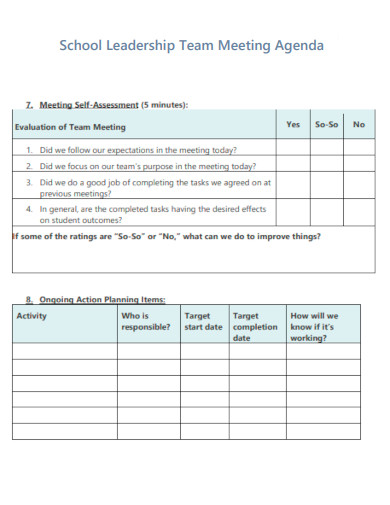
School Leadership Team Meeting Agenda
download now -

Host Teacher Meeting Agenda
download now -

Farm Resource Team Meeting Agenda Notes
download now -

Space and Projects Group Meeting Minute Agenda
download now -

Agenda of Board Executive Committee Meeting
download now -

Best Interests decision meeting Agenda
download now -

Audit Committee Meeting Agenda
download now -

Policy and Procedures for Board Meeting Agenda
download now -

BD Meeting Agenda
download now -
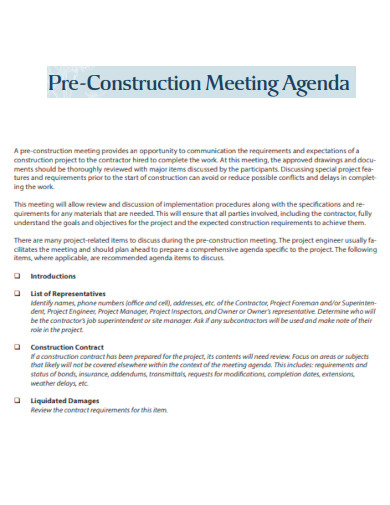
Pre-Construction Meeting Agenda
download now -

Standard Meeting Agenda Checklist
download now -

Research on Cancer Meeting Agenda
download now -

Planning Board Meeting Agenda
download now -

Regional Sewerage Program Technical Committee Meeting Agenda
download now -

Tribal Coordination Meeting Agenda Notes
download now -

Meeting Agenda for Automatically Inserting in Documents
download now -

Club Business Meeting Agenda
download now -
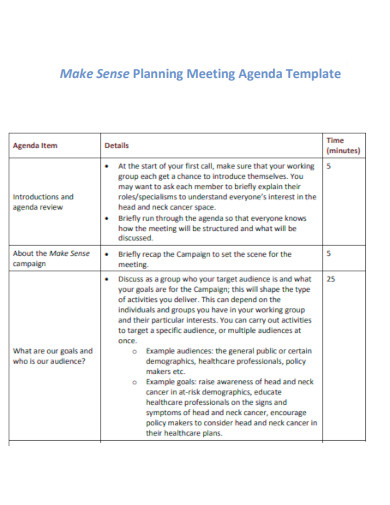
Make Sense Planning Meeting Agenda Template
download now -

Officer Transition Meeting Agenda
download now -

Expert Meeting Agenda
download now -

New Members Meeting Agenda
download now -

Working Group Meeting Agenda
download now -

Process Meeting Agenda and Minutes Template
download now -

Meeting Agenda Template and Worksheet
download now -

Sample Presidency Meeting Agenda
download now -

Community Advisory Committee Meeting Agenda
download now -

Team Meeting Agenda
download now -

River Community Advisory Committee Meeting Agenda
download now -

Executive Committee Meeting Agenda
download now -

Public Meeting Agenda
download now -

Planning and Zoning Meeting Agenda
download now -
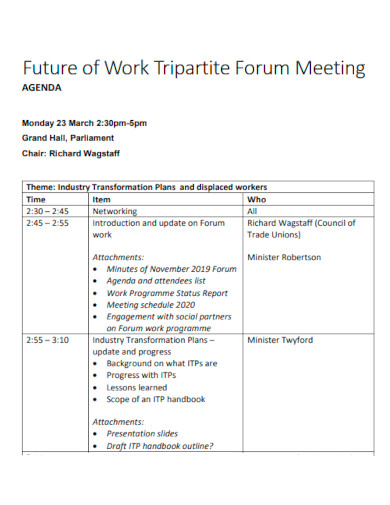
Future of Work Tripartite Forum Meeting
download now -

Pre-Proposal Meeting Agenda
download now -

Interface Meeting Agenda
download now -

Safety and Security Meeting Agenda
download now -

Early Warning System Meeting Agenda
download now -

Public Health Advisory Committee Meeting Agenda
download now -

Unit Titles Management Meeting Agenda
download now -

General Body Meeting Agenda
download now -

Troop Meeting Agenda
download now -

Council Meeting Agenda
download now -

Advisory Board Meeting
download now -

Agenda for Rules Committee Meeting
download now -

Virtual Meeting Agenda
download now -

Design Review Committee Meeting Agenda
download now -

Project Meeting Agenda
download now
What Is a Meeting Agenda?
An agenda for a meeting is a summary of what will occur during the meeting. This could include topics, objectives, a project timeline, designated presenters, supporting documents, and talking points. Before a meeting, participants are typically given the agenda so they can prepare. If you have ever considered using asynchronous communication instead of a forum, you should brush up on how to write an agenda. Agendas are crucial instruments before, during, and after a meeting. Before a meeting, an agenda can be used to set expectations and prepare. An agenda provides structure, saves time, and maintains focus during a session. After a meeting, an agenda can be used to summarize or compose the staff meeting’s minutes.
Benefits of Meeting Agenda
In today’s fast-paced business environment, most managers need more knowledge of the significance of a compelling agenda. Meetings can be challenging. Instead, they should be a method for your team or company to advance the goals of achieving objectives and assisting one another with work. A clear agenda is essential for a productive meeting. Here are some of its advantages if you’re still intrigued.
How to Plan an Effective Meeting
To end a meeting well, summarize the key points and answer any questions. You should also agree on what needs to be done and when and end positively by thanking everyone who came.
1. Determine Whether the Meeting Is Required
Meetings are time-consuming and should only be held when necessary. Consider the task list, the number of individuals involved, and the time commitment required. Before scheduling and holding a meeting, determine if the same effect can be achieved by distributing a memo sample, sending a quick email, and including the information in an upcoming conference that was already scheduled.
2. Invite Only Those Who Must Be Present
If the meeting requires the group to make a significant decision, only invite those who must be present. This encompasses anyone with a substantial stake in the company or the ability to veto the decision. If a colleague or supervisor only requires meeting details, send them an after-meeting summary or recording. If you need answers from a specific department, invite only the most qualified representative instead of the entire team.
3. Establish a Schedule
Setting a timetable for the duration of the meeting and communicating this timetable to employees is essential for promoting time management among all participants. In addition, consistently beginning and concluding meetings on time establishes the expectation that everyone will be punctual and demonstrates that you value your employees’ time.
4. Share Plans for Big Concepts Beforehand
Inform influential individuals of the significant concepts you intend to present during the meeting. Collect their comments and concerns, then address them in your presentation. For instance, if the finance director is concerned about project costs, you should create a budget estimate and compare it to other projects within the company.
How to Write a Meeting Agenda
The aim of the meeting should be made very clear in the agenda. The agendas for specific meetings may be more thorough than others. For instance, not all meetings require allotted time for subjects or supplementary materials. A practical schedule will consider everyone in attendance, the objectives you hope to accomplish, and the time given for the meeting. Here are five steps to create a meeting agenda for a productive discussion.
1. Concentrate on One Subject
Before you begin composing the agenda for your meeting, take a moment to consider your objectives. What are your goals? What is the purpose of this gathering? Define the meeting format. Having a theme and defining the sort of meeting will assist in determining the meeting’s focus, allowing attendees to prepare. Your objectives should convey what you hope to achieve during the session.
2. Decide on Topics
Ask your colleagues, fellow board members, committee members, and any other key stakeholders if there is anything they’d like to cover during the meeting. Allowing everyone to speak ensures that no one must yell to be heard. Create a list of issues to be discussed at your meeting based on the information you gathered about your stakeholders, meeting objectives, and meeting type. Ensure the topics are relevant to the meeting you intend to hold and the goals you wish to accomplish. Consider the problems that can be covered in the allotted meeting time. Only cram a little in!
3. Establish Time Limits and Leaders for Every Topic
Setting time restrictions for each topic you want to cover will help you stay on topic. The meeting organizer should choose a leader for each case if they intend to refrain from moderating the discussion. The subject leader runs the meeting throughout their topic, presents any necessary documents or slides, and ensures the topic stays within the agenda’s time constraints. It is helpful to remind topic leaders to bring their relevant documentation on the meeting day if you are in charge of running it.
4. Consider Required Documentation
Create a list of any documents required for the meeting. This may include presentation slides, data, project specifics, testing results, wireframes, prototypes, attendance sheets, or meeting minutes from previous meetings. If another team member must bring these documents to the meeting, inform them and include that information in the agenda.
5. Allow Time for Discussion and Summary
Allow time after the agenda for a quick summary and discussion. With a schedule, individuals occasionally require time after the meeting to pose questions. In addition, if you were working toward an objective, it would be good to review what was discussed during the meeting again. If you host a weekly meeting minute, you may require little effort for this. Typically, five minutes is sufficient for evaluation after a session. If this is a monthly meeting or the topic is new information, you should spare ten to twenty minutes at the back of the panel.
FAQs
What is on the meeting agenda?
It includes a list of topics, action items, and activities to be discussed at the meeting. A clear agenda for an appointment could be a brief bulleted list. Plans with greater specificity include descriptions of each agenda item, supporting materials, and anticipated outcomes for each discussion topic.
What is a meeting checklist?
Clarify the meeting’s purpose and desired outcome; ensure an appointment is necessary. Determine the mandatory and voluntary participants. Include the meeting agenda and any prerequisite materials in the meeting memo. Inform participants of how you want them to participate in the meeting.
How do you end a meeting?
To end a meeting well, summarize the key points and answer any questions. You should also agree on what needs to be done and when and end positively by thanking everyone who came.
Are the designated topics pertinent to all participants? Are you overlooking a crucial issue that requires discussion? If you like your group to participate in the meeting, solicit their input and consider incorporating their topic suggestions into the agenda.
